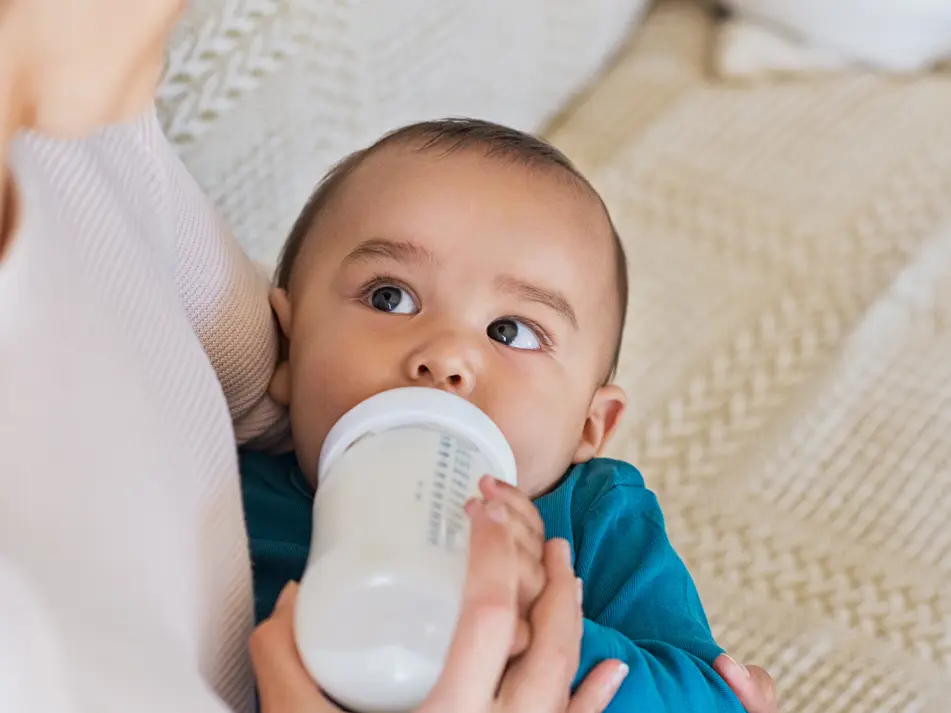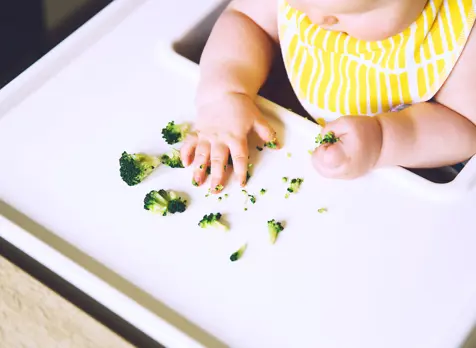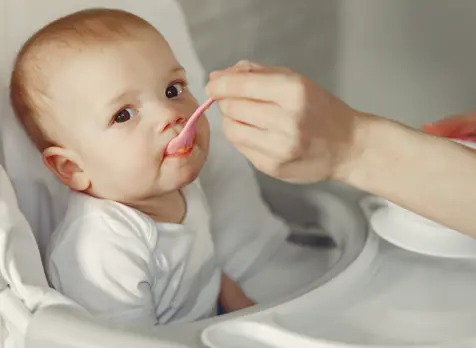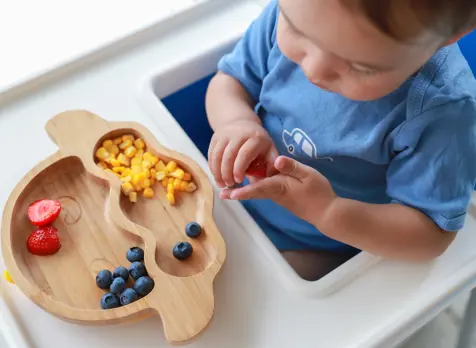Bottle-feeding

Research overwhelmingly supports breastfeeding as the best food for baby in the first six months of life. Unfortunately, despite our wishes, hopes and efforts, sometimes breastfeeding doesn’t work out.
Choosing to bottle-feed
When this happens a mother will make an informed choice to bottle feed, or her circumstances may require a baby to be bottle fed.
- Deciding on the formula can be tricky as there are many brands on the market. All formulas sold in Australia must meet a standard and have similar nutritional value.
- Specialist infant formulas should only be used if recommended by your doctor or paediatrician.
- It is important to follow the directions on the can and mix the exact amount of powder with the correct amount cooled boiled water
- All feeding equipment should be disinfected. By disinfecting your feeding equipment, washing your hands and keeping the preparation area clean, you will reduce the chance of your baby getting sick.
- Three methods for disinfecting feeding equipment are steaming, chemical and boiling.
- Regardless of the method you choose always clean bottles, teats and equipment in hot soapy water and rinse using clean running water before disinfecting equipment.
How to bottle-feed your baby
-
1
Ensure you are sitting comfortably and your back is well supported
-
2
Gently talk to your baby and hold them close enough so they easily have eye contact with you
-
3
Check the temperature and flow of milk by dropping a little amount on the inner area of your wrist.
-
4
To prevent your baby sucking in air, hold the bottle at an angle, ensuring the teat and neck of bottle contain milk.
-
5
Gently and slowly insert the milk filled teat into your baby’s mouth allowing your baby to spontaneously suck. Ensure the teat is above the tongue and far enough back of the mouth to enable your baby to suck in a coordinated manner
-
6
If your baby starts turning his/her head away, fussing, or getting unsettled, he/she may need a break or may be full. Allow time for your baby to have a break or bring up wind and reoffer. If he/she does not want any more don't force your baby to finish a bottle.
-
7
If you have twins or triplets, whenever possible feed them one at a time. This provides important individual time.
How much infant formula does my baby need?
All formula cans provide a general guide as to the amount of formula your baby needs. Most babies will let you know when they are hungry and need to be fed. This is called "demand feeding". Young babies may want to feed more often than older babies. Older babies will usually drink more formula at one time.
If your baby has regular wet nappies (5 or more wet nappies per day), poos are not hard or dry, and is gaining weight, your baby is likely to be getting enough formula. If you don't think your baby is getting enough formula, speak to your child and family health nurse or doctor
Transporting Prepared Feeds
The safest way to transport infant formula is to take the premeasured cooled, boiled water and the powdered formula in separate containers and mix them when needed. Warm the milk by placing the bottle in a container of warm water. Once the milk is warm, add the powder to the milk, replace the bottle top and collar before shaking the bottle until the infant formula powder is well mixed with the water.
If you need to transport prepared formula or expressed breastmilk, it must be icy cold (5°C) when you leave the house. Carry it in a thermal cool bag with a cooling brick to keep it cold. You must use the feed within two hours if you’re unable to refrigerate the bottle. If able to refrigerate the bottle within the two hours’ travel time it can be stored for 24 hours from preparation time.
Feeding Cups
Feeding cups have come a long way in the last few years and these days there are many different brands available in all sorts of colours and styles. When you’re choosing a feeding cup for your baby, look out for one that:
- Has a tight fitting lid not easily removed by your baby.
- Has two easy to grasp handles for small hands. Your baby will very quickly want to hold the cup.
- Is easy to clean without decorations that can trap milk – this makes cleaning difficult.
- Does not have any sharp edges.
- Is made from a safe form of plastic – it is now possible to buy bisphenol A (BPA) free plastic bottles and feeding cups.
- If your baby is learning to use a spout lid and cup, start with one that is not spill proof to encourage flow and an incentive to drink. Your baby can then move onto a spill proof one as they get to know how it works.
- Feeding cups should continue to be sterilised until your baby is 12 months old.
Bottle Feeding Problems
Using a bottle to feed your baby is not always as easy as it may seem. It’s not a matter of ‘just put your baby on a bottle’. Some babies prefer to be breastfed and will actively refuse to take milk from a bottle, while other babies will fall asleep during feeds and then wake shortly after the feed wanting more food. Other babies will become agitated and upset, holding out for a familiar breastfeed.
Many bottle feeding problems start to occur when you are weaning the baby onto a bottle because you need to return to the paid workforce or for other reasons such as illness. For babies, sucking from a bottle is a very different type of suck to suckling milk from your breast.
The first thing to do is to try to identify the reason why your baby is refusing the bottle.
Check for these signs:
- Has your baby always had some difficulty taking a bottle and it has become more problematic?
- Is your baby unwell? Do they have a temperature; have they started to vomit or become unsettled more than unusual; is their urine becoming smelly and darker in colour or more concentrated; are their bowel motions different, e.g. very frequent, loose, mucousy, frothy or with spots of blood?
- Does you baby have a sore mouth? Sometimes oral thrush can result in the baby having a very sore mouth. There are also other infectious diseases such as human hand, foot and mouth disease that result in small blisters in the mouth.
- If any of the above feeding issues are of concern, have your baby assessed by your child and family health nurse or doctor.
Once you have eliminated any health problems, there are several things to remember and strategies to try:
- Try not to become anxious. With time, patience and a gentle approach your baby will usually learn to take a bottle or in some instances a feeding cup.
- Find a quiet place to feed with minimal distractions and noise.
- If possible, ask your partner, family member or friend to try to do a feed. If breastfed, babies can smell breastmilk on their mothers and can become distressed when not offered the breast.
- If you do not have anyone in the house who can help for a few
feeds, lay the baby in a comfortable elevated position in a rocker or pram to elevate so the head is raised higher than their shoulders. Feed your baby in this position, holding the bottle and gently touching and talking to them. - Do not force your baby to feed by squeezing their cheeks or forcing their chin up and down. This type of forced sucking can create even more difficult problems to solve.
- Do not leave your baby with the bottle propped. This is very dangerous and can result in inhalation of milk into your baby’s lungs or choking, or long term it may cause dental caries and ear infections.
TOP TIPS
- It’s also important to regularly replace teats, as silicone and rubber teats deteriorate with time and can become a haven for bacteria.
- Tresillian strongly recommends you consult with your child and family health nurse, or doctor about your baby’s nutritional needs before introducing your baby to infant formula.











































